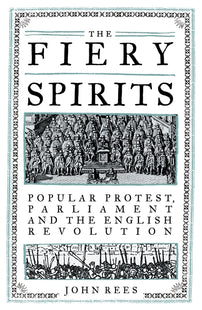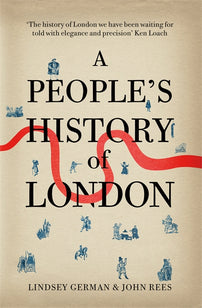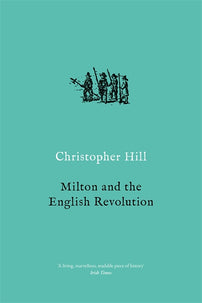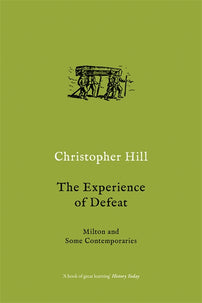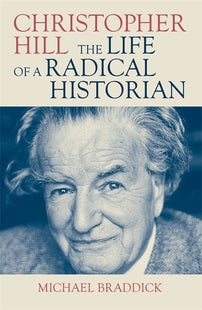The Waller Plot, Part II
In this second part of his three part serial John Rees, author of The Leveller Revolution and the recently published The Fiery Spirits, he shows how the Royalist conspirators plotted to seize the capital, targeting key sites and figures.
The first part of the series can be found here.


Scene 5: The Guildhall
The Tower was not the only magazine in the City. The conspirators also targeted Guildhall, seat of City government right in the heart of the most radical part of the City, the Coleman Street ward, and Leadenhall. So was the store of weapons at the house of Alderman John Fowke, an ally of Isaac Penington. Fowke was an overseas merchant with interests in both the East India Company and the Levant Company and was part of the merchants’ tax strike in the late 1620s, refusing to pay duties to the crown. Following this, Charles imprisoned Fowke and seized his goods. Fowke reckoned he had lost some £20,000 as a result of his defiance of the King. At the time of the plot he lived on Mark Lane, near the Tower, with his second wife Mary, who he married in 1638 in Hackney, the parish of radical minister Calybute Downing. Mary was the daughter of wealthy London mercer Edward Basse, a close ally of Oliver Cromwell. It was just a few months earlier, in January 1643, that the King named Fowke a traitor especially responsible for spreading disaffection with the Crown.

Scene 6: The City
There were other City radicals that the royalists were planning to target. The sixth panel shows the City as viewed from the south bank of the Thames, with its playhouses depicted on the riverfront. London Bridge, the only bridge over the Thames, is seen lined with buildings and with the gatehouse clearly visible at its southern end. Look closely and you can see the recently decapitated heads of the victims of execution displayed on pikes on its roof. Numerous watermen ply their trade on the river, one of the main arteries of urban travel. On the north bank is the City itself, dominated by the old St. Pauls with just 26 years left before it is destroyed in the Great Fire of London. The spires of the parish churches are miniature by comparison. The City was the great banker and armourer of Parliamentarian cause.
The Militia Committee was the most powerful tool of political organisation in the City. Besides Isaac Penington, who had become Lord Mayor only recently, deposing his more moderate predecessor, and John Fowke, the Militia Committee counted as members deputy Mayor Randall Mainwaring, Lieutenant Colonel of the City’s Red regiment, and Aldermen John Towse, Colonel of the City’s Orange regiment, a wealthy member of the Grocer’s company who loaned considerable amounts to Parliament. Also included were John Wollaston, a hugely wealthy gold merchant who had already crossed swords with one of the plotters, Sir George Benion, when he opposed Benion’s petition condemning the Militia Ordinance, John Warner, merchant of the Grocers’ Company, a Colonel of the City Green regiment and a collector of parliamentary loans and taxes, Thomas Atkins, a cloth merchant who had been imprisoned for refusing to name those in his parish who would not pay the King’s forced loan in 1640. They joined Colonel of the Red regiment, Thomas Andrewes, a wealthy linen draper from Fish Street who was a business partner of the even more radical Maurice Thompson, and one of the great parliamentary financiers, John Kendricke (one of the most radical of the Militia Committee) and Stephen Estwicke, who had been imprisoned by Charles for his refusal to pay Ship money, and was one of the main suppliers of cloth to the parliamentary army.[1]
These men were the opposite of the convinced royalists named in the King’s Commission. Some had been in direct, personal and political conflict with the King’s men. John Woolaston had presented the petition to the House of Lords in defence of the Militia Ordinance which had resulted in the opposing petition promoted by Sir George Binion being burnt by the common hangman and seen Binion himself jailed. Penington had, alongside William Strode, been at the forefront the prosecution of Benion. Randall Mainwaring had sequestrated Sir Nicholas Crisp’s property. Maurice Thompson, Alderman Thomas Andrewes’ business partner, had been involved in an acrimonious commercial dispute with Crisp. But more generally, had the plot succeeded, the arrest of these men would have been a crippling blow to the organisation of the parliamentarian war effort.


Scenes 7 and 8: The House of Lords and the House of Commons
The ambition of Waller and his confederates did not peak with the arrest of the Lord Mayor and the Militia committee. They also planned to seize the leading parliamentarians in the House of Lords and the House of Commons. In the Lords they set their sights on William Fiennes, Lord Sele, a Puritan opponent of the Stuart court since the 1620s and Lord Say. Say was nicknamed ‘Old Subtlety’ by contemporaries and, according to Clarendon, was “the pilot that steered all those vessels which were freighted with sedition to destroy the government”. The second named Peer was Lord Philip Wharton, also a long-time opponent of Charles and his Archbishop William Laud.
But Waller also had allies in the Lords. In one account, Waller mentioned the Earl of Bath, driven off by a stone throwing mob in South Moulton near his Devon estate when he tried to raise forces for the King and then arrested by Parliament for his troubles, as a possible commander of the royalists. The Earl certainly shared Waller’s devotion to church hierarchy and, like Sir George Binion, had been opposed to the Militia Ordnance. The Lords Conway, Portland, and Northumberland all had some sympathy with Waller. Lord Conway was ‘incensed against the Scots, and discontented with the Parliament here’. Waller also had a ‘great friendship with the earl of Portland’. Waller was “in good esteem with the earl of Northumberland”, Parliament’s leading representative in the recent peace negotiations with the King and suspected of royalist sympathies by Henry Marten, the fiery spirit most vociferously opposed to peace. Indeed, Marten and Northumberland had recently come to blows in the palace of Westminster after Marten admitted opening the Earl’s mail in search of evidence of his treachery. It is no surprise that Clarendon recorded Northumberland “expressed very good wishes to any attempt, that might give a stop to the violent actions, and proceedings of the houses, and produce a good understanding with the king.”
In the Commons, the plotters were to pursue John Pym, ‘King Pym’, the dominant voice in the opposition to Charles who had already been accused of treason when the King attempted to arrest five MPs in January 1642, as well as William Strode, another one of the five members and frequently described by Simond D’Ewes as one of the prominent ‘fiery spirits’ in the lower house most opposed to the monarchy. John Hampden joined them, again one of the five members and the hero of opposition to Ship money in the 1630s. He was just two short weeks away from losing his life at the battle of Chalgrove Field. Clarendon thought Hampden’s experience as one of the five members made his “nature and carriage seeminge much fiercer then it did before” and when he drew his sword against the King “he threw away the scabbard”, but he nevertheless concluded that Hampden’s “power and interest at that tyme was greater, to doe good or hurte, then any mans in the kingdome, or then any man of his ranke hath had at any tyme: for his reputation for honesty was universal.” The last named was Sir Philip Stapleton, who was shortly to become a leader of the Peace Party but was, at this stage, a parliamentarian with an impressive record of military action, including at Edgehill.John Rees is an historian, broadcaster and campaigner. He is coauthor of A People's History of London and author of The Leveller Revolution and The Fiery Spirits, among other titles. He is a Visiting Research Fellow at Goldsmith's, University of London and a National Officer of the Stop the War Coalition.
[1] Ship money was a tax levied by Charles to fund the Royal Navy. It was one of the many taxes levied without Parliament’s approval.

